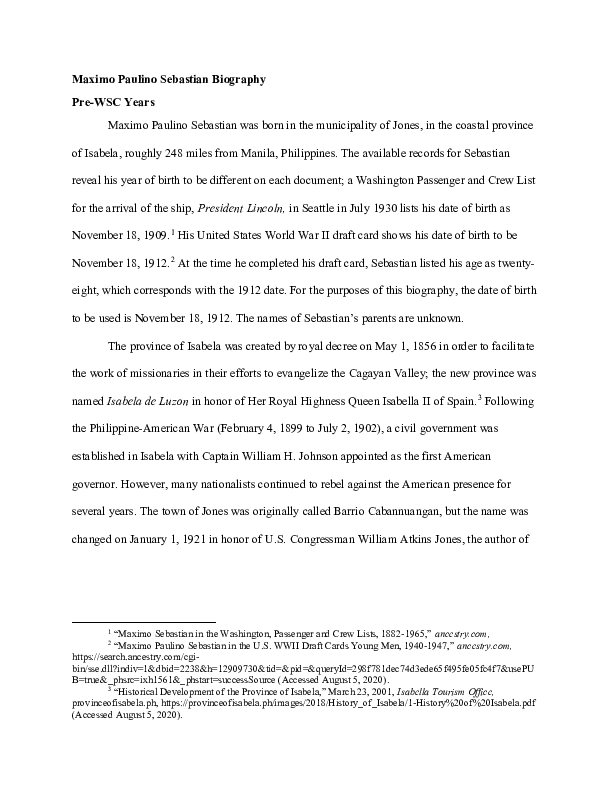Maximo Paulino Sebastian Full Narrative
Maximo Paulino Sebastian was born in the municipality of Jones, in the coastal province of Isabela, roughly 248 miles from Manila, The Philippines on November 18, 1912. He graduated from high school in Jones, and arrived in Seattle, Washington in July 1930. He attended Yakima Valley Junior College from 1933 to 1934, before transferring to Washington State College (WSC) in 1935 as an Education major. While at WSC, he joined the Filipino Club, where he was elected the organization's treasurer. Sebastian left WSC after 1937 and transferred to the University of Idaho, where he graduated. He then moved to Iowa to pursue a graduate degree in Education at the University of Iowa. After the United States entered World War II, Sebastian lost all contact with his family in the Philippines. He joined the Army in 1944, where he was a Technician, Fifth Grade. Shortly after the American forces landed, the Japanese sent a formidable naval force to the islands. From October 23 to October 26, the “greatest naval battle of World War II” took place. During the early morning of October 25, 1944, four Japanese battleships, eight cruisers, and eleven destroyers surprised the Allies, sinking four ships: the USS Gambier Bay, USS Hoel, USS Johnston, and USS Samuel B. Roberts. Despite these losses, the Japanese suffered heavy losses and decided to withdraw. Kamikaze suicide planes were engaged and sank the USS St. Lo and damaged others. It is unknown which of these ships Sebastian was on, but the report of his death indicates the “landing ship on which Technician Sebastian was being transported was destroyed when a Japanese plane scored a direct hit,” on October 25, 1944. He is memorialized on the WSU Veterans Memorial.
Leyte Gulf, The Philippines

